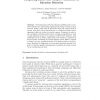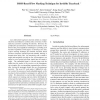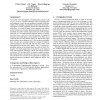122 search results - page 23 / 25 » Re-wiring Activity of Malicious Networks |
IMC
2005
ACM
14 years 1 months ago
2005
ACM
Network “telescopes” that record packets sent to unused blocks of Internet address space have emerged as an important tool for observing Internet-scale events such as the spre...
CORR
2010
Springer
13 years 7 months ago
2010
Springer
Abstract. Network Intrusion Detection Systems (NIDS) monitor a network with the aim of discerning malicious from benign activity on that network. While a wide range of approaches h...
EUROSYS
2008
ACM
14 years 4 months ago
2008
ACM
Eudaemon is a technique that aims to blur the borders between protected and unprotected applications, and brings together honeypot technology and end-user intrusion detection and ...
SP
2007
IEEE
14 years 1 months ago
2007
IEEE
Law enforcement agencies need the ability to conduct electronic surveillance to combat crime, terrorism, or other malicious activities exploiting the Internet. However, the prolif...
CCS
2007
ACM
14 years 1 months ago
2007
ACM
We describe a new attack against web authentication, which we call dynamic pharming. Dynamic pharming works by hijacking DNS and sending the victim’s browser malicious Javascrip...



